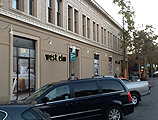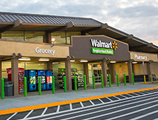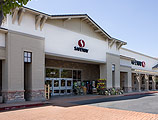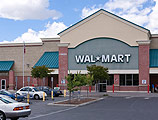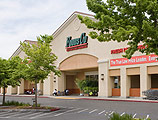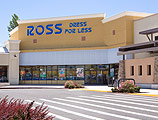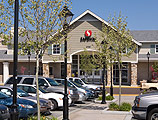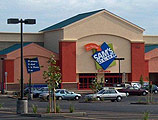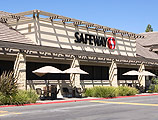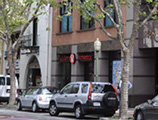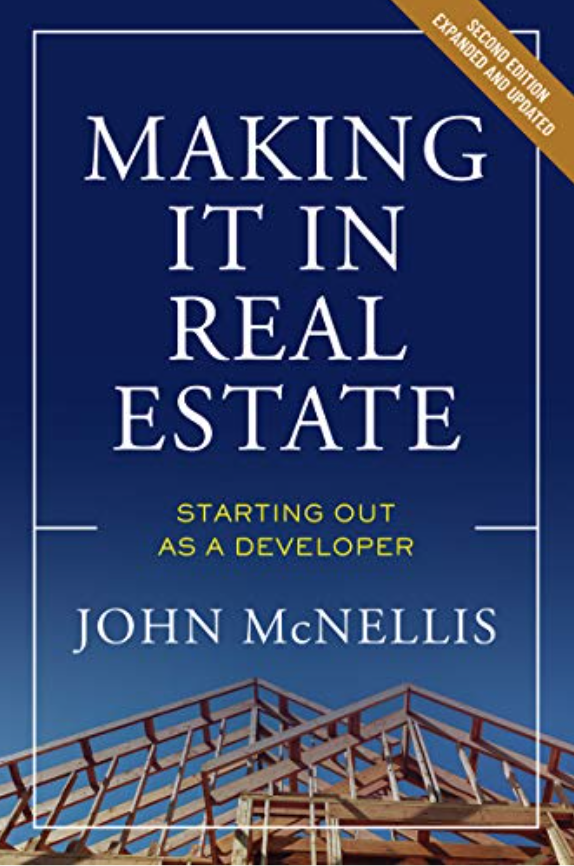A year ago, our shopping centers were shuttered, and our tenants so crushed we forgave their April rent. Believing the world would reopen by mid-April, we thought our merchants would have a couple weeks of free-rent to make up for March’s closure. We couldn’t have been more wrong.
A year later and we’re still forgiving and deferring rent for our hardest-hit tenants. And hoping the Governor will finally permit them to operate at 100 percent capacity. (Read into this what you like: California’s draconian shutdown has killed thousands of businesses, while producing infection and death rates no lower than the nationwide numbers. And in the land where not even bank robbers wear masks—Texas—the virus rates are only fractionally worse than ours: a 9.45 percent infection rate vs. California’s 9.25 percent).
Where are we today? Starting with what you already know, second and third tier malls, particularly enclosed malls, are dead and gone and aren’t coming back. Their dinosaur anchors—Sears, J.C. Penny, Macy’s, and the like—were sinking in the tar pits long before the virus’s coup de grace.
In counter point, discounters like Marshall’s, TJ Maxx and Ross have thrived in the last year—Ross’s stock has doubled—suggesting it’s neither the virus nor e-commerce that killed off the mall habitués; rather it’s the mismanagement of the Jurassic retailers themselves.
Supermarkets have thrived in the Covid era, many doing better than ever. Just as with the clothing discounters, bargain markets have done particularly well. However, smaller specialty markets—think Trader Joe’s—have been smacked by occupancy limits. With, say, a 25 percent maximum occupancy, small markets lack the necessary floor area to get enough customers in the door. Nothing like freezing outside in a long line to dampen one’s enthusiasm for cheap cheese.
In December, Bloomberg reported that 110,000 restaurants—16 percent of all US eateries—had permanently closed and that the industry was in “free fall”. Maybe. Meanwhile, no one’s going hungry. In fact, MSN.com’s Market Watch reported last week that 61 percent of us have been packing on weight like bears before hibernating. Couple these two facts and it’s no surprise that prepared foods—ready-to-eat meals—have been flying off supermarket shelves.
Back to restaurants. The continental divide between the vanquished and the victors are the two magic words: “drive thru”. “Take-out” is runner up. We have one Jack-in-the-Box with sales up 50 percent. Drive-thru was an obvious winner for all from day one, but take-out has been more selective. Pizza has been rolling in dough, but the homebound quickly learned that only a snob with a head cold would bother picking up complicated meals from fancy restaurants, meals that taste like Chef Boyardee if eaten forty-five minutes later.
Home improvement stores—Home Depot, Lowes and their regional counterparts—stumbled for about an hour at the pandemic’s outset, but then roared to life as half the country started hammering away at home.
To no one’s surprise, misery’s favorites—liquor and cigarettes—didn’t miss a beat and, depending on your point of view, continue to either comfort or curse the afflicted, profitably in either case.
Besides badly run soft and hard goods retailers and the better class of restaurants, the biggest losers over the last twelve months have been personal services, gyms and cinema. Personal services—nails, hair, massage and so on—flat-lined last year. Today, they’re coming back, but slower than legally permitted. Our tenants report their clients are still scared.
In for thirty miles of bad road a year ago, dry cleaners are still stuck in neutral, their fates dependent on the next chapter of the work-at-home phenomenon.
Gyms were padlocked last year, many closed forever; the survivors are reopening now. Cost—a common thread differentiating retail’s winners and losers—is a big factor with gyms. Higher-end gyms are bucking up against Peloton (stock up 400 percent in the last year) and the fancy home gym movement. At $10 a month, Planet Fitness, Crunch Fitness and the other discount gyms are immune from that competition.
Cinemas? With zero income for nearly a year, a global streaming business that will likely do for theaters what Netflix did to Blockbuster Video and no plan B (the only way to repurpose a movie theater is with a bulldozer), it’s surprising that more chains haven’t given up. When asked, one big-time landlord guessed that the latest generation, state-of-the-art cinemas will be fine, while another suggested that cinemas have no choice: they’re stuck riding their landing barges to Normandy beach and praying for the best.
On to today. We see some retailers out looking for new deals: clothing discounters, bargain supermarkets, coffee chains, quick serve and fast food restaurants—hell, any tenant with a drive-thru—home improvement centers, auto uses (tires, oil changers and car washes), and cell phone stores. We also see opportunistic restaurant operators out there picking over the bones.
There are some green shoots this spring. Finding them is tricky.





